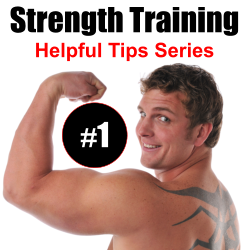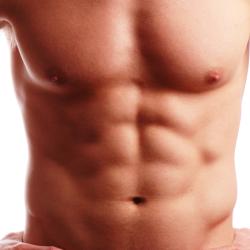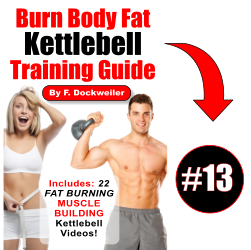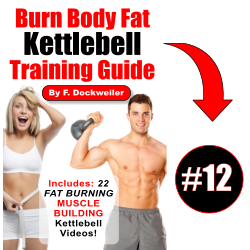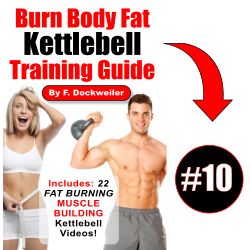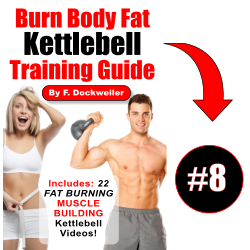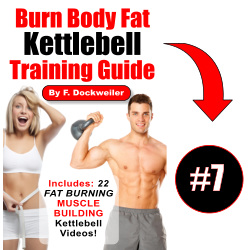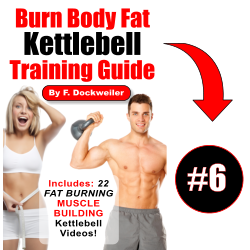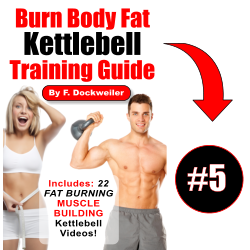The Kettlebell swing is the Elvis Presley of the fitness world. This is because in the same way that Elvis is known as the King of Rock ‘n Roll, the Kettlebell swing is known for being the King of Exercises.
How’s that for cool?
Anyway, doesn’t that phrase just make you smile? “Kettlebell Swing” – sounds like a hot, retro kind of dance, doesn’t it? (Can’t stop thinking about Elvis shaking his pelvis, huh?)
A Special Victory Dance
But enough of the King of Rock ‘n Roll for a moment, and let’s focus on the King of Exercises. If you’re the creative, imaginative type, and you were to think that Kettlebell swings are like a special kind of victory dance, you’d sort of have a good point going.
Only, instead of you and your legs going backwards and forwards, or even sideways like some crazy crab on the dance floor, what you do when swinging a Kettlebell is mostly stay in place, and do your moves energetically while in that same place.
You let your arm or arms (depending on what kind of swing exercise you’re doing) do the energetic movements, but there’s no real pressure on your arms, just like in dancing (unless, of course, you were to do hip-hop-type handstands).
Your feet, especially your heels, would support your weight. Your hamstrings or the backs of your thighs would feel the pressure, contracting and expanding as you squatted or stood. And, you’d also let your hips move forward and backward.
Kettlebell Swings From the Feet Up
Anyway, moving in those ways makes it possible for the engagement of numerous muscles in your body from your feet up to your shoulders. The reason that a basic Kettlebell swing resembles a victory gesture is that the raising of your arm much like what is done by a person who just won a competition is a main feature of the exercise.
There is no leaping or fast leg movements involved, but the effect on your cardiovascular system with all the squatting, standing, arm raising, and hip thrusting is such that after a few repetitions, you could feel that you had just finished a grueling one hour run.
Clearly, Elvis had the right idea when he kept gyrating his hips and raising his arms while performing.
Firm and Strong Butts From Kettlebell Swings
Kettlebell swings are popular because the movements are very simple, and you always have a choice about how much weight you want to swing. More than those considerations, however, are the facts that Kettlebell swings that are correctly performed can really increase the definition of your butt.
Now, why is this important? The butt is at the back, and that being the case, people you approach won’t see it right off, anyway. In other words, you don’t need a well toned butt to make a good impression. Wrong or right?
Wrong.
The fact is, you need a shapely behind to make people think that you know how to take care of yourself, that you value your body, and that you most likely spend time working out, which is good, because you clearly live a healthy lifestyle.
Why would they think all of that just from looking at your butt? It’s because the buttocks are one of the hardest parts of the body to sculpt, and the reason for that is, there is too much fat surrounding the muscles of your buttocks.
So, does this mean that doing a Kettlebell swing can make your butt look leaner and firmer? Yes! That’s exactly one of the great things that Kettlebell swings can do for you – give you a beautiful butt!
Remember, each Kettlebell exercise is a fat blaster. The fat on your butt isn’t immune to such blasting. How many other forms of exercise can deliver on that promise? Bet you’ll have a hard time coming up with an answer, and that’s because Kettlebell swings are the best butt-developing exercises ever, bar none.
Bodybuilding Hip Thrusting Power
It’s the hip thrusting that does it. When you thrust your hip forward while doing the exercise, your buttocks also tighten, firming up your precious gluteus maximus. And while you do that, your posture is also improved, because you cannot afford to slouch or have a rounded back while you’re doing a swing.
Otherwise, your back will hurt, and you run the risk of having an injury. As for your abs, they also tighten when you squat, which helps greatly in sculpting them.
So – great butt, great posture, great abs… aren’t Kettlebells just great?
Kinds of Kettlebell Swings
At this point, we need to clear up an important misconception. See, there are numerous kinds or variations of Kettlebell swings. These are the most popular:
- One-arm or one-hand swing
- Two-arms or two-hands swing
- Alternating arms swing – this involves transferring the Kettlebell from one hand/arm to the other while the Kettlebell is in motion or swinging through the air
- Stalling or pausing-at-the-top swing
- Sideways swing
- Pivoting swing
Now, online, the available information could confuse you, because there are some exercise sites that mistakenly identify and show a Kettlebell snatch as being the same as a Kettlebell swing.
That’s probably because aside from the original swing, also known as the Russian swing, which raises the Kettlebell only up to the shoulders, there’s another version known as the American swing, which raises the Kettlebell over the head.
The American swing can look a lot like a Kettlebell snatch, especially to those who are new to using Kettlebells, so, it’s understandable if some confusion ensues. Still, you shouldn’t let such misleading information take away your interest and enthusiasm about working out with Kettlebells.
What’s important to know is that you don’t have to worry about being misled, because you’re in good hands. More detailed instructions about doing a Kettlebell swing and other Kettlebell exercises can be found in the 22 Kettlebell videos you get (like the demo above) when subscribing to the My Fitness Nut Newsletter at the top of MyFitnessNut.com.
Just keep in mind that Kettlebell swings are basic exercises. On the other hand, Kettlebell snatches are more advanced. Let’s move on to the next section that we’ve titled “The Kettlebell Snatch: Explosive Power in One Go” and find out what snatches are all about.
